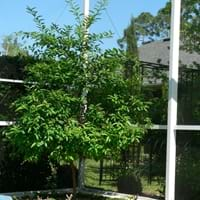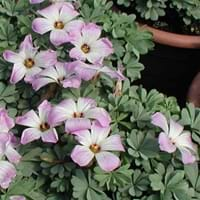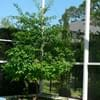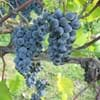Life Span
Perennial
Perennial
Type
Fruit
Bulb or Corm or Tuber
Origin
Hybrid origin
Argentina, Chile
Types
Eustis, Lakeland, Tavares
Not available
Number of Varieties
Not Available
Habitat
gardens, Woodlands
Shaded sites, Woodlands
USDA Hardiness Zone
11-12
7-9
Sunset Zone
H1, H2, 7, 8, 9, 14, 15, 16, 17, 18, 19, 20, 21, 22, 23, 24
21,22
Habit
Oval or Rounded
Clump-Forming
Flower Color
White
White, Fuchsia, Rose, Violet
Flower Color Modifier
Bicolor
Bicolor
Fruit Color
Light Yellow, Yellow green
Not Available
Leaf Color in Spring
Green, Dark Green
Light Green, Gray Green
Leaf Color in Summer
Dark Green
Light Green
Leaf Color in Fall
Dark Green
Several shades of Green
Leaf Color in Winter
Light Green
Light Green
Leaf Shape
Ovate
Heart-shaped
Plant Season
Spring, Summer, Fall, Winter
Spring, Summer, Fall
Sunlight
Full Sun
Full Sun, Partial Sun, Partial shade
Type of Soil
Loam, Sand
Clay, Loam, Sand
The pH of Soil
Acidic, Neutral
Neutral
Soil Drainage
Well drained
Well drained
Bloom Time
Late Spring, Early Summer
Late Spring, Early Summer, Summer, Late Summer, Early Fall, Fall
Tolerances
Drought
Drought
Where to Plant?
Container, Ground, Pot
Ground, Pot
How to Plant?
Divison, Seedlings
Divison, Seedlings
Plant Maintenance
High
Medium
Watering Requirements
Do not let dry out between waterings
Water in the early morning hours
In Summer
Moderate
Lots of watering
In Spring
Ample Water
Moderate
In Winter
Less Watering
Average Water
Soil pH
Acidic, Neutral
Neutral
Soil Type
Loam, Sand
Clay, Loam, Sand
Soil Drainage Capacity
Well drained
Well drained
Sun Exposure
Full Sun
Full Sun, Partial Sun, Partial shade
Pruning
Remove dead branches
Remove damaged leaves, Remove dead branches, Remove dead leaves
Fertilizers
All-Purpose Liquid Fertilizer, organic fertlizers
All-Purpose Liquid Fertilizer
Pests and Diseases
Citrus foot rot, Citrus gummosis, Citrus leaf miner
Red blotch
Plant Tolerance
Drought
Drought
Flower Petal Number
Single
Single
Foliage Texture
Medium
Medium
Foliage Sheen
Glossy
Matte
Attracts
Not Available
Insects
Allergy
Not Available
Asthma, Depression
Aesthetic Uses
Showy Purposes
Cottage Garden, Formal Garden, Ground Cover, Showy Purposes
Beauty Benefits
Not Available
Not Available
Environmental Uses
Air purification
Air purification
Medicinal Uses
Fiber, Vitamin C
Not Available
Part of Plant Used
Fruits
Flowers
Other Uses
Used As Food, Used in making beverages
Basketary
Used As Indoor Plant
Yes
No
Used As Outdoor Plant
Yes
Yes
Garden Design
Edible, Fruit / Fruit Tree, Shade Trees
Alpine, Container, Houseplant, Mixed Border, Rock Garden / Wall
Botanical Name
X CITROFORTUNELLA floridana
OXALIS adenophylla
Common Name
Limequat
Chilean Wood Sorrel, Pink Buttercups, Pink Carpet Oxalis, Silver Shamrock
In Hindi
Limequat
Chilean Wood Sorrel
In German
Limequat
Chilean Wood Sorrel
In French
Limequat
Chilean Wood Sorrel
In Spanish
Limequat
Chilean Wood Sorrel
In Greek
Limequat
Chilean Wood Sorrel
In Portuguese
Limequat
Chilean Wood Sorrel
In Polish
Limequat
Chilean Wood Sorrel
In Latin
Limequat
Chilean Wood Sorrel
Phylum
Magnoliophyta
Magnoliophyta
Class
Magnoliopsida
Magnoliopsida
Order
Sapindales
Oxalidales
Family
Rutaceae
Oxalidaceae
Clade
Angiosperms, Eudicots, Rosids
Angiosperms, Eudicots, Rosids
Tribe
Not Available
Not Available
Subfamily
Not Available
Not Available
Number of Species
Not Available
Properties of Limequat and Chilean Wood Sorrel
Wondering what are the properties of Limequat and Chilean Wood Sorrel? We provide you with everything About Limequat and Chilean Wood Sorrel. Limequat has thorns and Chilean Wood Sorrel doesn't have thorns. Also Limequat does not have fragrant flowers. Limequat has allergic reactions like Not Available and Chilean Wood Sorrel has allergic reactions like Not Available. Compare all the properties and characteristics of these two plants. Find out which of these plant can be used as indoor plant. If you are interested to decorate your house and garden, find out aesthetic uses, compare them and select the plant which will beautify your surrounding. Along with beautification, try comparing medicinal and edible uses of Limequat and Chilean Wood Sorrel and you can choose the plant having best and most benefits.
Season and Care of Limequat and Chilean Wood Sorrel
Season and care of Limequat and Chilean Wood Sorrel is important to know. While considering everything about Limequat and Chilean Wood Sorrel Care, growing season is an essential factor. Limequat season is Spring, Summer, Fall and Winter and Chilean Wood Sorrel season is Spring, Summer, Fall and Winter. The type of soil for Limequat is Loam, Sand and for Chilean Wood Sorrel is Clay, Loam, Sand while the PH of soil for Limequat is Acidic, Neutral and for Chilean Wood Sorrel is Neutral.
Limequat and Chilean Wood Sorrel Physical Information
Limequat and Chilean Wood Sorrel physical information is very important for comparison. Limequat height is 300.00 cm and width 180.00 cm whereas Chilean Wood Sorrel height is 10.20 cm and width 15.20 cm. The color specification of Limequat and Chilean Wood Sorrel are as follows:
Limequat flower color: White
Limequat leaf color: Green and Dark Green
Chilean Wood Sorrel flower color: White, Fuchsia, Rose and Violet
- Chilean Wood Sorrel leaf color: Light Green and Gray Green
Care of Limequat and Chilean Wood Sorrel
Care of Limequat and Chilean Wood Sorrel include pruning, fertilizers, watering etc. Limequat pruning is done Remove dead branches and Chilean Wood Sorrel pruning is done Remove damaged leaves, Remove dead branches and Remove dead leaves. In summer Limequat needs Moderate and in winter, it needs Less Watering. Whereas, in summer Chilean Wood Sorrel needs Lots of watering and in winter, it needs Average Water.





